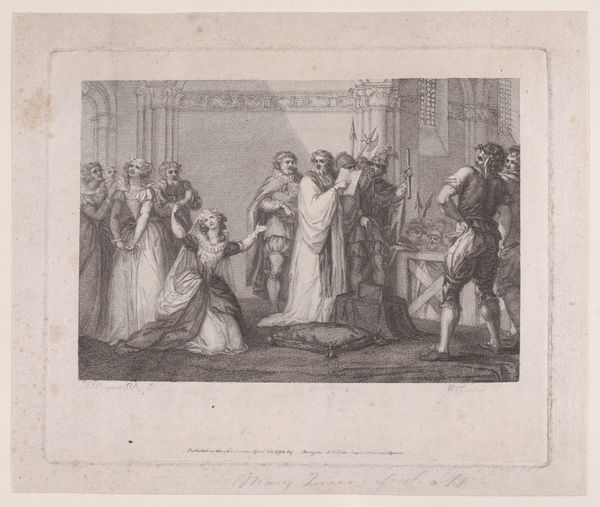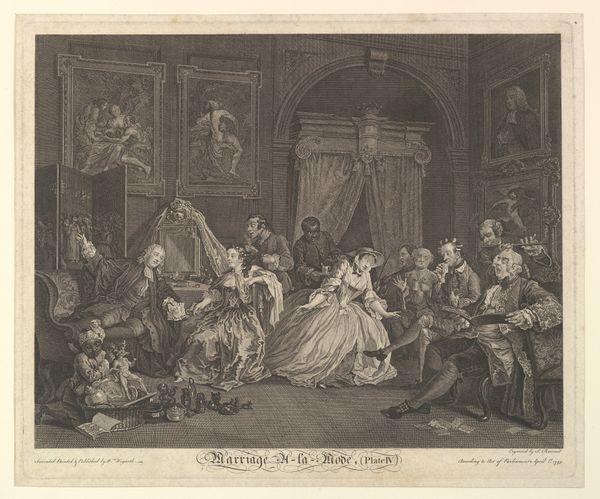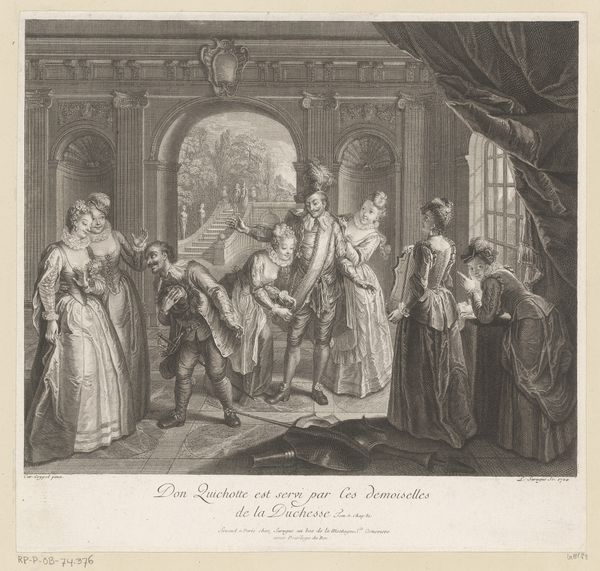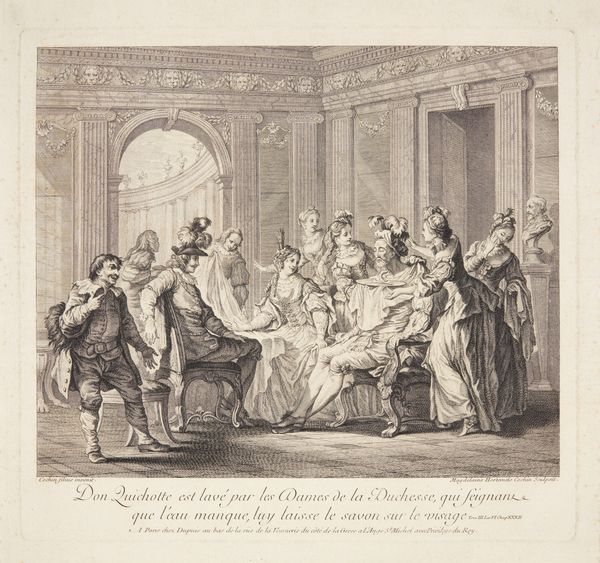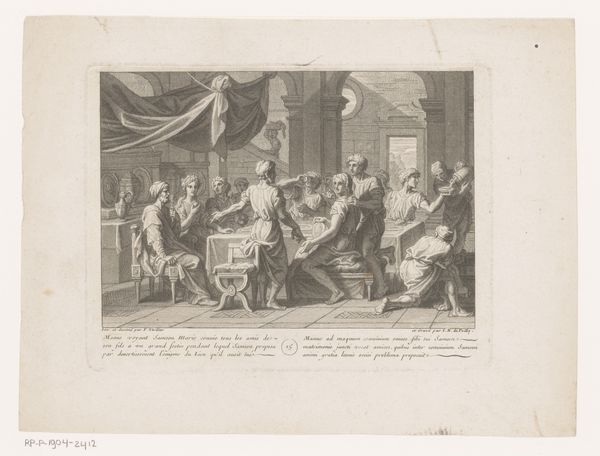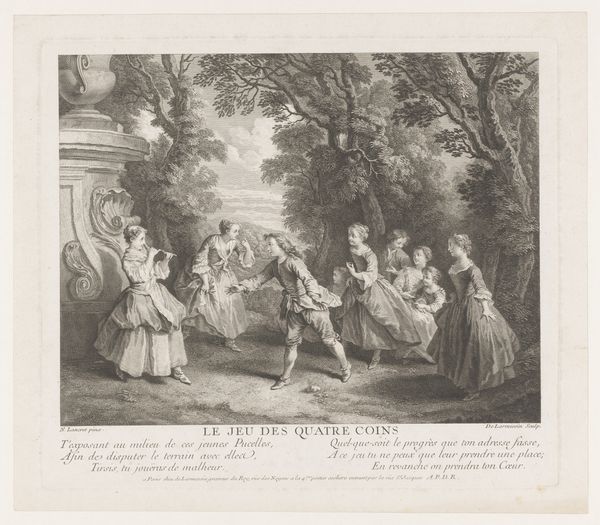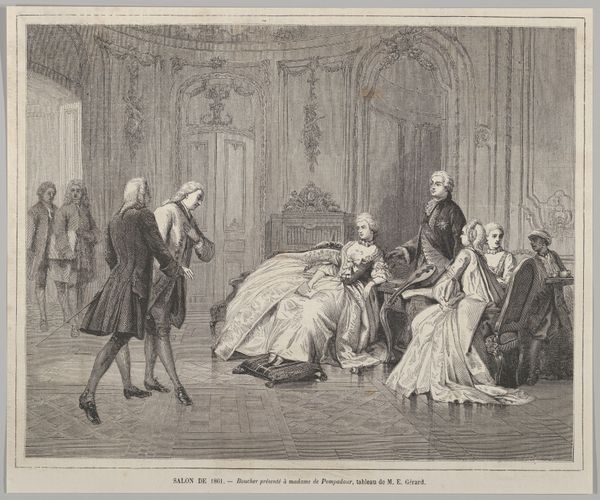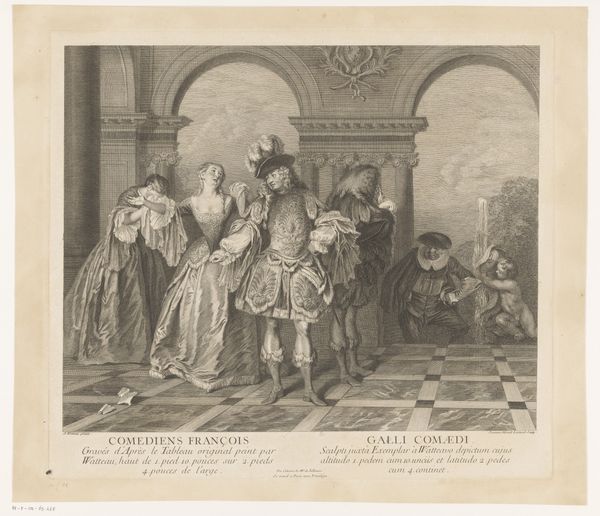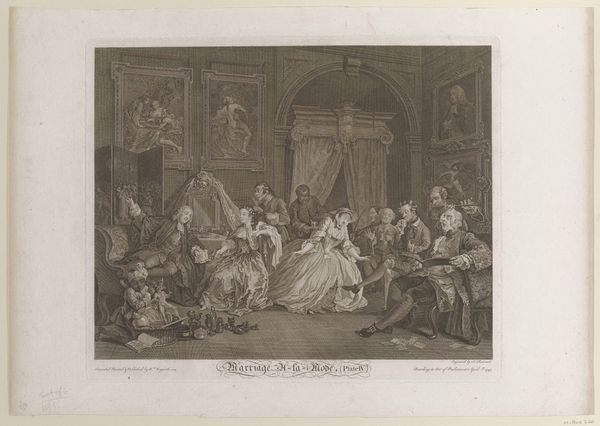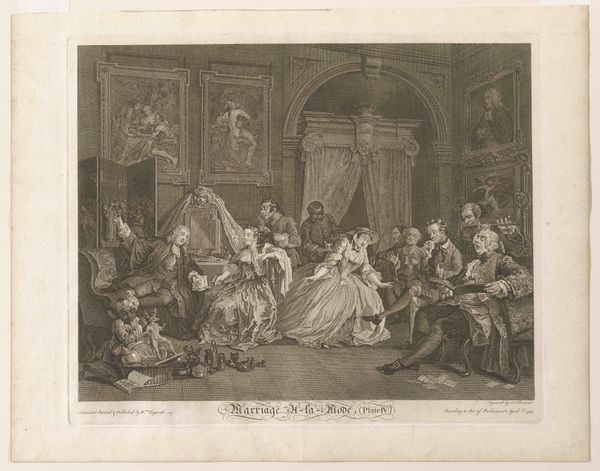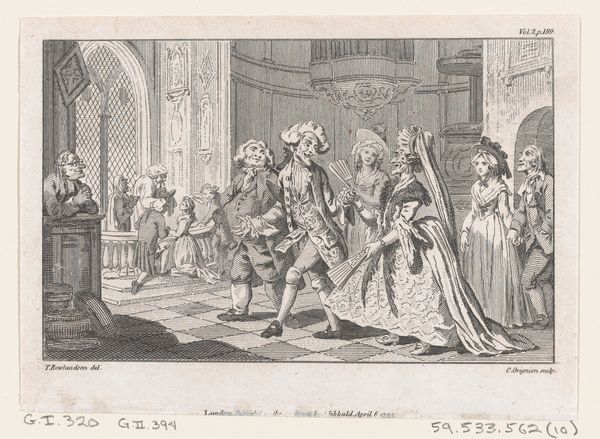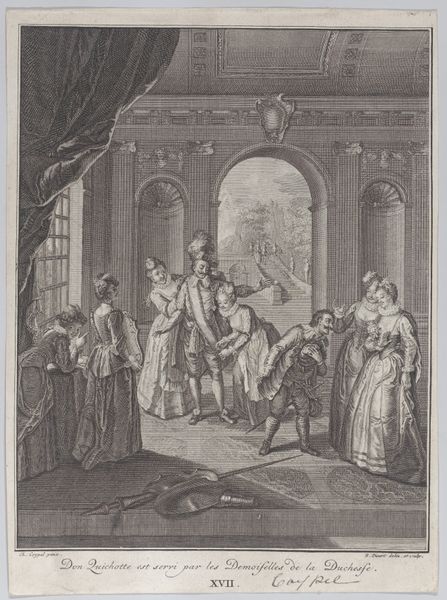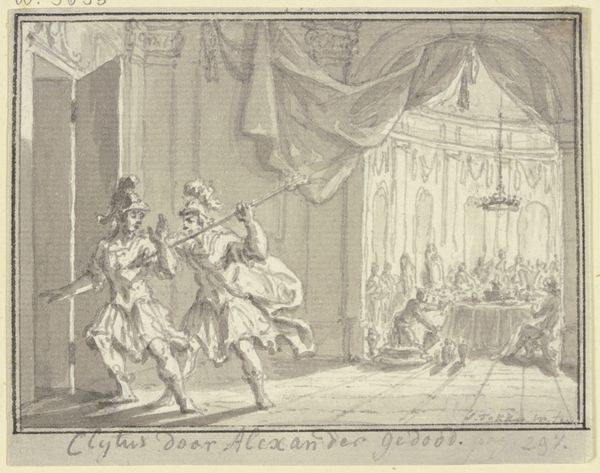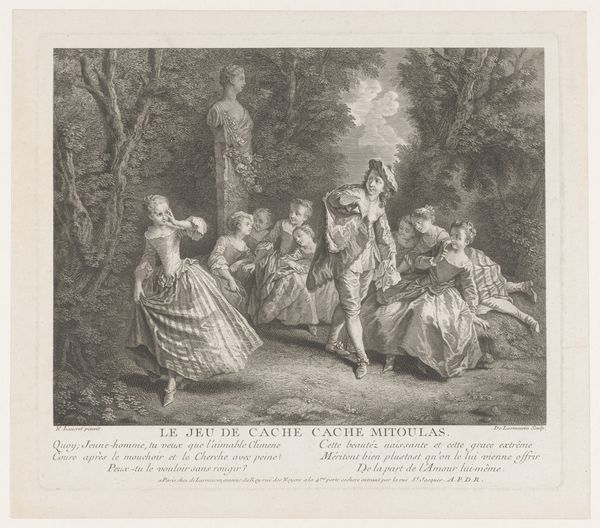
engraving
#
narrative-art
#
baroque
#
figuration
#
line
#
genre-painting
#
engraving
Dimensions: height 384 mm, width 464 mm
Copyright: Rijks Museum: Open Domain
Curator: Nicolas de Larmessin III gifted us "Volwassenheid" in 1735, a captivating engraving that throws us right into a scene brimming with... well, what's your take? Editor: Frenetic energy! And quite claustrophobic, despite the architectural grandeur. It feels like observing a staged drama, perhaps a comedic one, ready to fall apart at any moment. It makes me uneasy. Curator: Uneasy is a good word. Larmessin’s Baroque style often uses these busy compositions. Remember, engravings like this circulated widely, reproducing paintings for a larger audience. How do you read that tension playing out socially and historically? Editor: Instantly I think of the theater, right? Social performance. Every character seems acutely aware of being watched—the woman delicately displaying her foot, the man’s affected stroll, the flurry of fussing ladies-in-waiting. It's all artifice layered upon artifice, an obsession with external validation which I think the French caption captures. Curator: Absolutely. The script reads (translated into english) “Adolescence. Since her rays illuminate our house, she seeks to buy pleasure and honor." Editor: Followed by something about adorning oneself, studying to please, and our happiness depending on the gaze of others. Heavy stuff disguised as frothy entertainment. Do you feel as though, perhaps, it's hinting at some deep insecurity masked with such elaborate pageantry? Curator: The "pleasure and honor" aspect is particularly loaded. For whom is this honor being bought? What are the conditions? We tend to gloss over the political and economic forces shaping art from this period. We get distracted by the powdered wigs. Editor: But the wigs ARE distracting, admit it! The whole performance IS designed to distract. The print feels as though it’s poking fun but it is beautiful at the same time. Curator: It is. Even in its hyper-stylized, self-aware performance. These scenes reflected a lifestyle only a small fraction of the population had access to, but the desire for status... well, that resonates across classes and through time. Editor: So it's funny in a ‘look at those ridiculous people and the lengths to which they are willing to go to fit in!" type of way? It’s unsettling because these archetypes are recognizable. Still a lot of looking and not a lot of real feeling. I might need a drink! Curator: Join the club. Though I’d argue there is feeling here—mostly anxiety. Anxiety beautifully rendered, expertly etched, and widely disseminated. But anxiety, nonetheless.
Comments
No comments
Be the first to comment and join the conversation on the ultimate creative platform.
